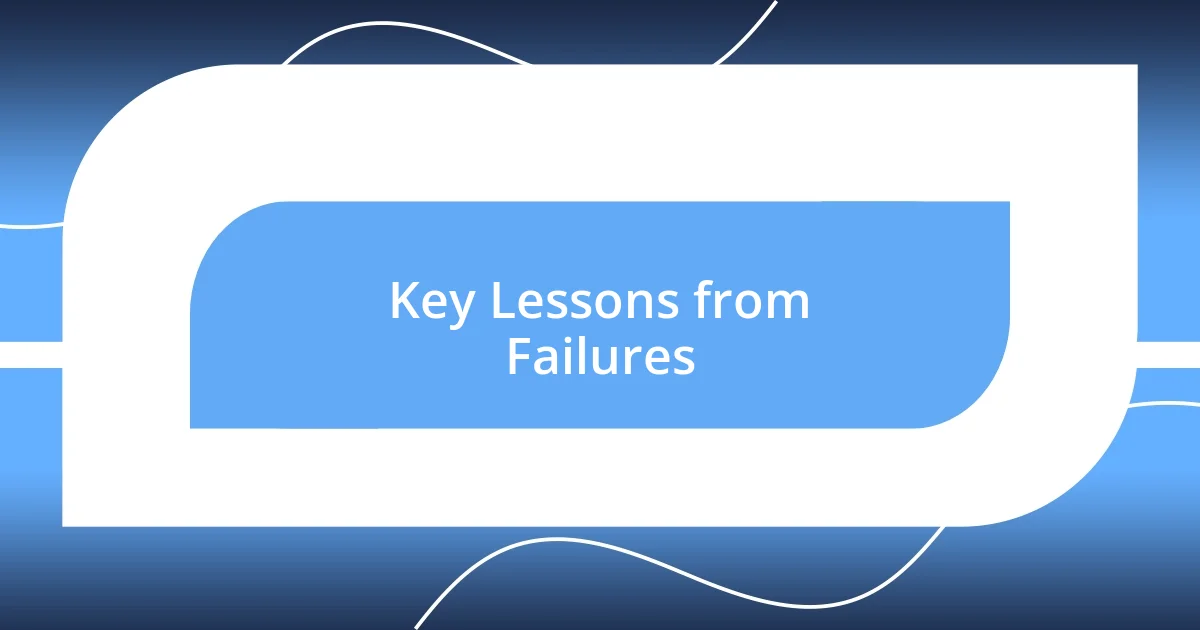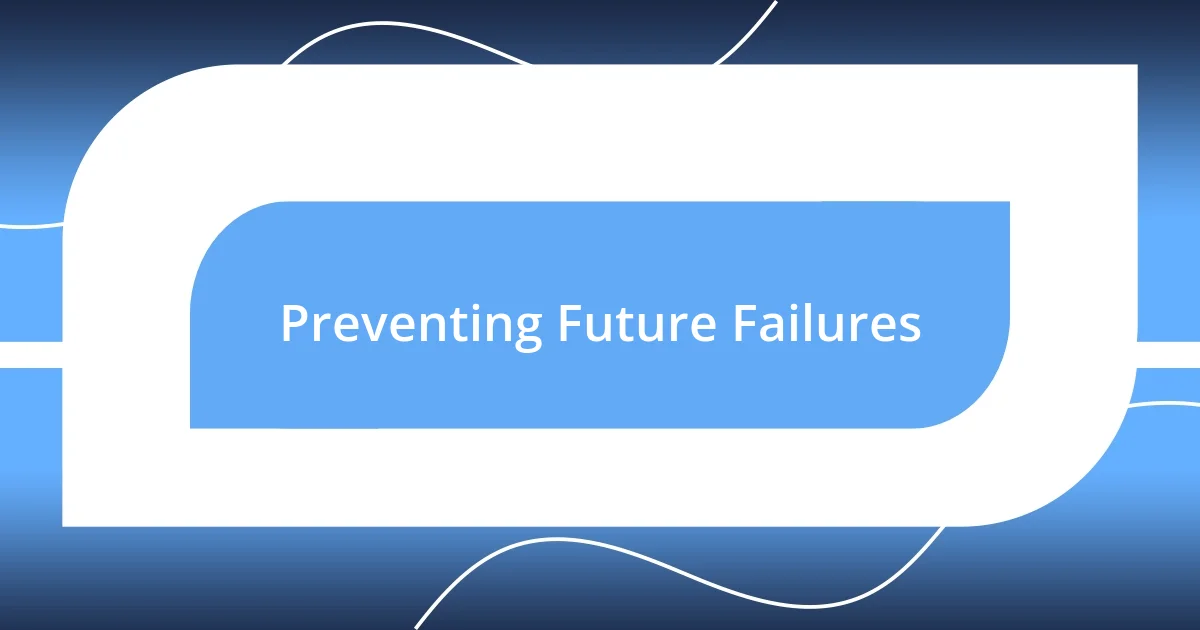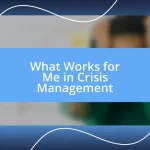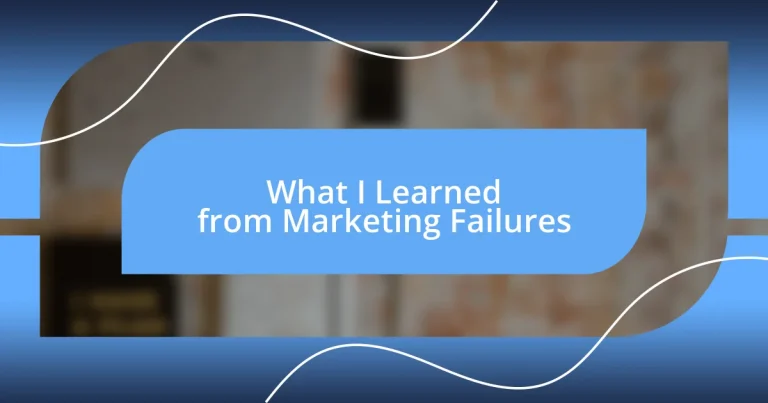Key takeaways:
- Failures in marketing provide valuable lessons: understanding the audience, being adaptable, and embracing vulnerability can lead to growth.
- Common pitfalls include lack of market research, miscommunication among team members, and neglecting data analytics, which can result in flawed campaigns.
- Successful recovery strategies involve conducting post-mortem analyses, adopting agile practices, and fostering a resilient team culture through open dialogue about setbacks.

Understanding Marketing Failures
Marketing failures are often a tough pill to swallow, but I believe they offer invaluable lessons. I once worked on a campaign that seemed brilliant on paper, but it fell flat during execution. I felt that sinking feeling when the metrics rolled in, prompting me to question: How did we miss the mark so drastically?
Understanding why a marketing strategy fails can feel like peeling back the layers of an onion; it often leads to tears but ultimately reveals insights. I remember analyzing a past project where we ignored our audience’s preferences, thinking we knew what they wanted. Reflecting on that experience, I realized how essential it is to genuinely listen and adapt rather than presuming we have all the answers.
Sometimes, the emotional impact of failure can linger long after the project wraps up. Have you ever faced a setback that made you second-guess your skills? I certainly have. It’s easy to get disheartened, but embracing those feelings can be the first step to rekindling your passion and igniting new ideas for future campaigns.

Key Lessons from Failures
When reflecting on past marketing failures, I find that the insights gained are more valuable than the brief pain of defeat. One unforgettable experience was a product launch that completely misfired because we focused too much on flashy advertising rather than the actual benefits our product provided. I learned the hard way that it’s critical to prioritize substance over style.
Here are some key lessons I’ve gathered from failures:
- Understand your audience: I remember assuming we knew what our customers needed. Regularly gathering feedback can prevent missteps.
- Be adaptable: My rigid thinking in a campaign led to missed opportunities. Flexibility in strategy often opens new doors.
- Test your ideas: Launching a full-scale campaign without testing it first taught me to embrace smaller trials—failure can be more manageable.
- Embrace vulnerability: I realized that sharing my failures with peers not only helped me heal but also fostered genuine connections and support.
- Analyze failure without emotions: Emotionally detached analysis helped me pinpoint flaws objectively, guiding future strategies.
- Document and learn: I started keeping a failure journal. Reflecting on what went wrong and why has become part of my growth process.

Common Pitfalls in Marketing
Marketing is riddled with potential pitfalls that can lead to failure if not navigated carefully. In my experience, a common error is the lack of thorough market research. I once dove headfirst into a campaign without fully understanding the competitive landscape. The product was top-notch, but it turned out the market was already saturated. This situation taught me the importance of knowing not just what you want to sell, but also who you’re competing against.
Another prevalent pitfall is miscommunication within teams. I’ve seen firsthand how misaligned goals can steer a marketing strategy off course. During one campaign, our creative team had one vision while the sales team pursued another. It resulted in a disjointed message that left our audience confused. Reflecting on this, I realized that fostering transparent communication can unify efforts and enhance overall effectiveness.
Finally, I can’t stress enough the danger of neglecting data analytics. Early in my career, I launched a campaign based solely on my instincts, ignoring valuable data insights. The results weren’t pretty. That experience taught me that with the right data, decisions can be anchored in reality rather than assumptions, leading to more impactful marketing strategies.
| Common Pitfall | Personal Experience |
|---|---|
| Lack of Market Research | Dove into a campaign without understanding competition, leading to a saturated market. |
| Miscommunication | Team misalignment caused a disjointed message and confusion among audiences. |
| Neglecting Data Analytics | Launched a campaign based on instincts rather than data, resulting in poor outcomes. |

Analyzing Failed Campaigns
Analyzing failed campaigns is often where the most profound lessons are learned. I recall a specific campaign that flopped miserably because we neglected to segment our audience correctly. Instead of tailoring our message, we created a one-size-fits-all approach. Looking back, I can’t help but wonder—how often do we let assumptions drive our decisions? It’s vital to truly understand the nuances of your audience’s needs and preferences.
One aspect I think we often overlook is the importance of pre-launch testing. I remember feeling excited about a bold new idea I was passionate about, yet I bypassed testing on a smaller scale. The result? A full launch that fell flat because I ignored subtle but crucial feedback during our trial runs. This experience taught me the hard way that testing isn’t just an option; it’s a necessity that can save time and resources, and possibly even your reputation.
Emotionally, I find it challenging to analyze failure without letting frustration creep in. However, I learned that detaching myself emotionally from the outcome can provide clarity. One time, after a poorly received campaign, I took a step back and asked myself: What can I extract from this pain? That reflective moment transformed my approach, allowing me to pinpoint not just what went wrong but why it mattered—and it spurred my growth. Isn’t that the ultimate goal in marketing, turning setbacks into stepping stones?

Strategies for Recovery
Understanding how to recover after a marketing failure is crucial for future success. One strategy I find effective is to conduct a thorough post-mortem analysis. After one campaign flopped, I gathered my team for a candid discussion. We didn’t just point fingers; we dissected every element, from strategy to execution. This deep dive helped us pinpoint the exact missteps and, more importantly, provided actionable insights that guided our next project.
Another recovery tactic I’ve adopted is to embrace agile marketing practices. I experienced significant improvement when I shifted to a mode of constant iteration and feedback loops. Rather than launching a full campaign, we tested smaller components, solicited feedback, and then refined our approach. This not only mitigated risk but also built a culture of collaboration and adaptability within my team. Have you ever tried making adjustments on the fly? It definitely keeps you connected with your audience’s reactions.
Lastly, I think it’s vital to nurture resilience within the team. After a tough hit, I found that encouraging open dialogue about emotions—like frustration or disappointment—can be incredibly healing. I’ve held sessions where team members expressed their feelings around project setbacks. Creating a safe space like this fosters trust and camaraderie. Doesn’t it make sense that a supportive environment can lead to more innovative thinking? Ultimately, learning to bounce back effectively hinges on our ability to acknowledge feelings while refocusing on growth opportunities.

Preventing Future Failures
I often find myself reflecting on the power of thorough research before embarking on any marketing venture. There was one instance where we were brimming with excitement about a new product launch. Instead of delving into consumer insights, we rushed ahead, applying our own biases about what we thought people wanted. It was shocking when the product flopped, but that experience firmly taught me that investing time in research helps avoid future pitfalls. Have you ever skipped that step and faced similar consequences? It’s a learning curve that reinforces the idea that knowledge is indeed power.
Another effective method I’ve adopted is to consistently seek feedback from diverse sources. After encountering a significant setback, I initiated regular brainstorming sessions not just within our marketing team, but with cross-department members. One memorable session involved the sales team sharing customer feedback they’d gathered. I was amazed at how their insights illuminated aspects we hadn’t even considered! This collaborative effort not only enriched our strategies but cultivated a culture of openness. How often do we forget to tap into the wealth of information around us?
Lastly, I’ve realized that setting up a clear feedback loop during campaigns is essential. I remember vividly a campaign where we implemented weekly check-ins to gauge performance. This practice caught minor issues before they escalated, avoiding another repeat of a prior misstep. I couldn’t help but feel empowered seeing our analytics transform in real-time, and it reinforced my belief in adaptability. Have you ever felt the thrill of catching issues early on? It’s an exhilarating part of the process that ultimately ensures continuous improvement.

Real-Life Success Stories
Real-life success stories often serve as beacons of hope after marketing failures. I once worked with a brand that faced disastrous customer feedback after launching a cereal line that was far too niche. Instead of throwing in the towel, the team rallied together, re-evaluated their audience, and revamped the product based on the genuine preferences of their consumers. That quick pivot turned the product into a household name, proving that listening to your customers can lead to astonishing success.
Another example that stands out in my mind is a tech startup that initially faltered with a complicated app. They launched to crickets, prompting the founders to host focus group sessions to understand what went wrong. What truly impressed me was their willingness to accept criticism and implement changes. When they simplified their user interface, downloads surged, and the app became a favorite among users. Have you ever witnessed a project transform through user feedback? It’s incredible how an open mindset can lead to breakthrough ideas.
Finally, let’s not forget about the iconic example of Apple when they stumbled with the Apple Maps launch. Instead of hiding from their mistake, they publicly acknowledged it. I admire how they took that opportunity to improve their product significantly, ultimately enhancing user experience and trust. Seeing a brand own its challenges not only heals the initial disappointment but also cultivates a deeper connection with the audience. How powerful is it to learn from our blunders together? That’s the essence of growth, isn’t it?












